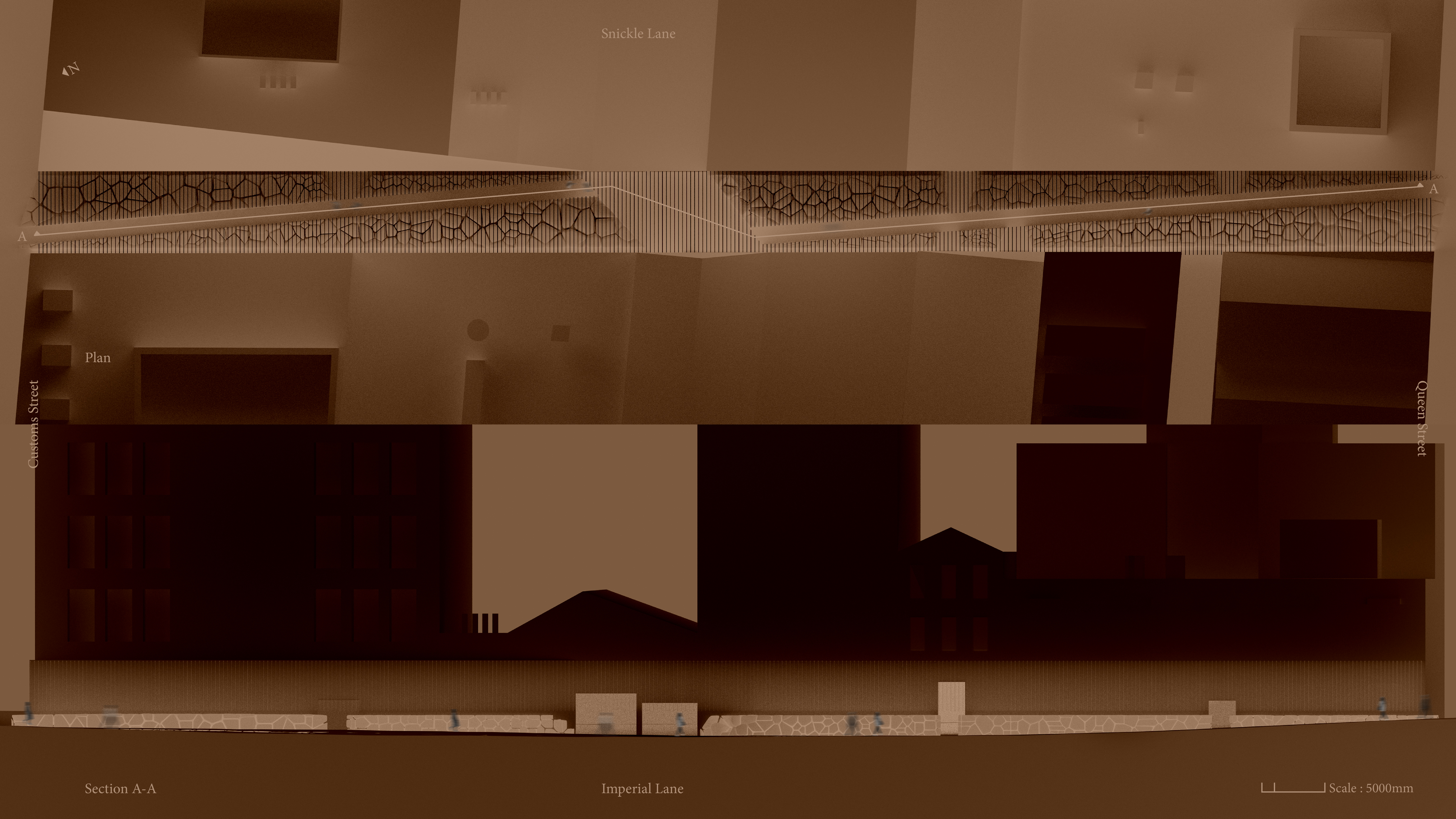

The place where the sky hangs down to meet the horizon.
The horizon orientates us; determining our location in relation to the sky, sea, and sand. In the city, the horizon is undiscoverable, hidden behind the urban landscape. At dusk, we then illuminate the sky removing te whetū (the stars) and leaving a featureless canvas in its place.
Skysill reframes the walker’s spatial relationship with Fort Lane through observation (allocentrism) and immersion (egocentrism). Looking at the macroscopic through microscopic lenses of materiality – water and sand. Building on the concept of liminality, Skysill temporarily transforms Fort Lane’s plot, enabling the pedestrian to rediscover Aotearoa as tāepaepatanga o te rangi; the place where the sky hangs down to meet the horizon.
Fort Lane has a strong historical plot functioning as a service way connecting Customs, Fort and Queen Street. Skysill temporarily interrupts Fort Lane’s plot, and revisits its natural storyline, linking it back to the broader Aotearoa narrative of navigation. Using the horizon as an anchor and a metaphor for liminality, Skysill recreates the interaction between sand, sea and sky to represent the destruction of our dark sky environments.
Cantilevered bamboo scaffolds carry water to thousands of threads. Te Whetū (the stars), in the form of water droplets, reflect light pollution from the surrounding commercial district as they roll don the threads dripping into beds of sand. As the sand erodes and collapses, construction materials are exposed, revealing the ‘future’ of our dark sky environments if we continue to leak light into these natural habitats.
The customary linear route of Fort Lane has been reframed, and pedestrians have no choice but to interact with each other along the pathway. As they descend through the lane, the horizon line grows, to meet them at eye-level. At the central intersection of the installation, pedestrians are immersed in the elements, sand spills from the beds and water falls from the sky. The stars fall upon us as we shine light upon them. This immersion brings awareness to their ‘footprint’ and enables an experience of transformational liminality.
Skysill’s natural materials - bamboo, hemp rope, sand, and construction waste - model sustainable design practice (cradle to the grave) and the key medium - water - is constantly on the move, heightening the pedestrian’s experience of materiality. The water is sourced from stormwater drains running beneath the site, purified in sand baths, then pumped to the centre of Skysill where the clean water rains onto and over the visitor.
Gently falling, drop by drop (māturuturu) to the sea.



